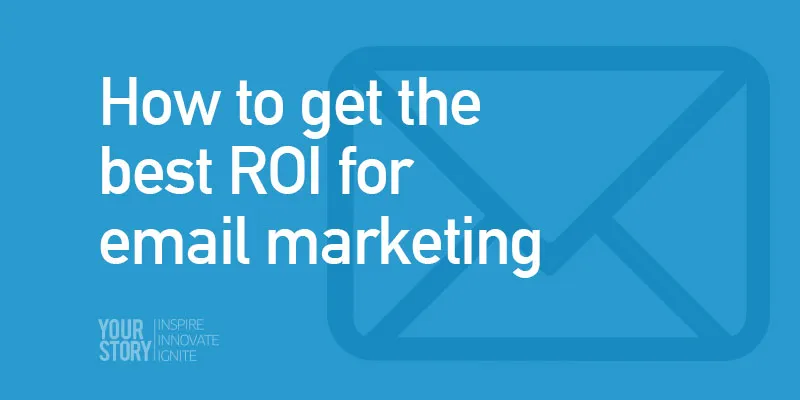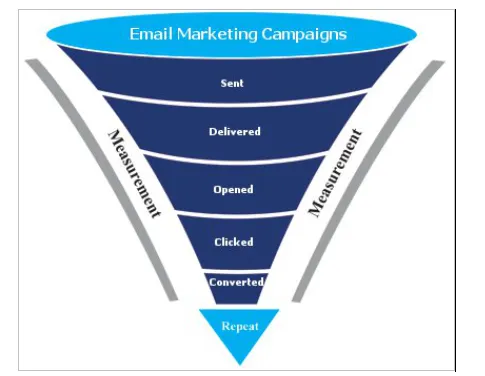How to get the best ROI for email marketing
The Return on Investment (ROI) for Internet and email marketing formula can be written down as:
ROI = (Gain from Investment – Cost of Investment)/Cost of Investment.
The ROI for email marketing continues to slide. However, it still dominates alternate internet marketing investments.
In 2006, email marketing enjoyed a median ROI of $52.23 for each dollar spent. This year, the common return on investment for email marketing fell (somewhat sharply) by $12 to $40.56 for each dollar spent. Still, it is a great bang for your buck, isn’t it? I don’t see too many banks (or bookies) giving something near that!
Still, compared to ROI for search marketing of $22.24 per dollar spent; email marketing remains the MVP of the web marketing league and returning captain of the international marketing all-star team.

I was really stunned to examine that the ROI for mobile marketing was as low as $10.51 for every dollar spent. Considering the high delivery rates of mobile electronic communication, I assumed it might be higher for a few reasons.
The ROI for social networking is slowly rising year after year. In 2011, the ROI for social networking was $12.71 and in 2012 it's expected to increase only by $0.19 to $12.90 and only up another $0.50 to $13.43 by 2016.
I wonder how that humble long-range forecast for ROI can have an effect on payment in social networking by internet marketing departments. In all fairness, it's hard not to be influenced by friends on buying choices, thus I don’t assume it's as clear cut as these figures reveal for social networking.
How to improve and measure ROI from your email marketing campaigns

If you have been following business news and marketing tips, you have in all probability detected how everyone is concerned about the advantages of email marketing. And yet, you actually do not open most of the e-blasts that crowd your inbox—who has the energy, interest or time? Knowing that, how can you presumably trust that an email marketing campaign is definitely worth the investment?Don't quit nonetheless. What you have encountered is not email marketing, its dangerous email marketing. Too often, business house owners brag about the sheer size of their mailing lists, but the point to consider is how engaged those listed members really are, and whether or not they have converted into customers.
To really make the most of your email marketing campaigns, you would like to live your ROI frequently, and take constant steps to get the best out of your efforts. Here are a number of key ways to do that:
How to measure your ROI?
1. Set ROI Goals
As with any marketing campaign, you would like to begin by setting goals that are both achievable and measurable for varied groups across your organization. The goal of your sales team, for instance, is to get 100 new leads, whereas the goal of the content team is also to extend the amount of page views on all log content.
Everyone in the team should be on the same plane as far as the goals are concerned.
2. Track your on-line analytics
Once you've got your goals set, it is time to choose extremely specific metrics to trace your progress towards these goals. For example
• Open Rate: As you can probably guess, this refers to the amount of individuals who opened your email, though it's not possible to inform what proportion it really scans. To calculate your open rate, multiply the amount of individuals who opened your email by 100 and divide that by the amount of emails you sent: (opens X 100) / # of emails. For instance, if you sent 1000 emails and had 20 opens, you'd calculate your rate like this: (20 X 100) / 1000 = 2% open rate.
• Click through Rate (CTR): If you are following email marketing best practices, every email will have a call to action button or form that drives people to your website. The clicking through rate provides you a thought of what percentage of individuals really followed through. This is often calculated in the same manner as the open rate, i.e. (clicks X 100) / # of emails. To essentially build the foremost of this metric, make certain the link you utilize for your decision to action button is labeled in Google Analytics, therefore you'll track the revenue from any bought product back to its supply.
• Conversion Rate: The conversion rate means the number of individuals who received your email and truly took the action you needed them to take, whether it is a sale or a like for your Facebook page. Again, that will be (# of individuals who took action X 100) / # of emails.
3. Track your offline analytics
While an email campaign begins online, it usually turns into offline conversions, which may be tough to trace. For example, what happens if a client learns about your sale through an email, and goes to the physical store to buy the product while never mentioning the email?
To really measure the offline impact of your email marketing campaigns, you've got to bridge those two worlds for the client, instead of waiting for them to do so.
One way to try and do that is to incorporate a special code within the email that the client should print or gift on a smartphone so as to redeem a proposal. Make certain that it is distinctive, so that non-customers cannot accidentally use it.
Or, you can provide your email subscribers a unique deal they cannot avail elsewhere in your promotion efforts. That way, after they pop into the shop asking this 25% off campaign, you will know they were referred via your email campaign.
While you cannot perfectly match up offline sales with on-line trigger points, it is worthwhile to use this strategy to give you a rough idea of what percentage in-store sales stem from on-line campaigns.
How to improve your ROI?
Once you've got a solid sense of what quantity your email promoting is paying off, there are certain things you must do:
1. Grow your email list with relevant users
Big email lists do not mean much unless their ranks are full of engaged users.
It is important to spot and recruit your passionate followers, by creating a call to action which is as straightforward as possible. Merely ending the email with ‘contact us’ does not work. Forms ought to be fast and straightforward to fill out (the fewer cells the better). Check different locations each on top of and below the fold to visualize wherever they are most noticed.
Don't ignore the in-store location as another place to capture list members. You can do this easily with a piece of paper, or by asking customers for their email addresses as they checkout. If you utilize code like square, customers will enter their emails as they pay. No matter what your approach, make sure to articulate your email request in such a way that the customer understands it and responds accordingly.
2. Segment your lists
It is best to divide your subscriber list into different groups. By doing this, you will produce extremely specific and targeted campaigns, thereby increasing your open rates.Instead of one-size-fits-all approach, it is better to phase your email lists.
The geography, purchase history, demographics, and actual versus prospective shoppers are some of the categories you can use. It is important to note how each category behaves vis-à-vis your email. Once a pattern is established it becomes easy to target the particular category with a focused campaign.
3. A/B check your emails
When it comes to email marketing, experimentation is your friend - especially if it involves A/B testing (testing multiple versions of an email to check the effectiveness of each). For every A/B check, you will prefer one part of your email to vary, and build a special email for every version. You might, as an example, have a red Call to Action (CTA) button in one email, and a blue one in another. Then you'd randomly assign every email to two different email segments, and track which of them had higher response rates (measured in CTRs, opens, and conversions). The different parts which need to be checked could be the language on the CTA, the topic line, the layout or style of the e-mail, or the content itself.
4. Time your emails carefully
Ever noticed that almost all newsletters arrive in your inbox in waves? That is because email marketers apprehend that certain ‘send’ times garner additional opens and conversions than others.
For example, open rates are higher on the weekend once email traffic is lower. You can use adweek.com general ‘send’ time tips to work out your schedule. However, you will have even greater success if you utilize your own analytics to trace the time when your emails are opened, and designate your future send times consequently.
5. The Takeaway
Email marketing is often an unbelievably powerful force for curating, and keeping a loyal client base engaged with a clear impact on your company's bottom line.
But that may only happen with a deep understanding of what your goals are, a way to live your progress, and what to try and do with the results. Good luck, and have fun!
About the Author

Chaitanya Nandigam is the founder and CEO of Emblix Solutions. At first he is an Embedded Software Engineer and later on turned into hobby blogger. When one of his online magazines reached amazing traffic within two months, he found his true calling. He became an entrepreneur in the area of digital marketing and stood among Top 10 Digital marketing companies of India within one and half year.







